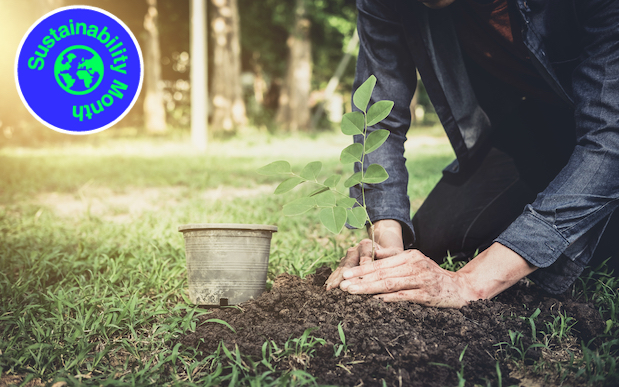
Are you a fan of the succulent/leafy indoor plant trend, but just can’t seem to keep any of the damn things alive for more than a few weeks?
Are you passionate about keeping Australia’s incredible and unique natural environment living, loving and thriving?
Do you not know how to even deal with your overwhelming sense of dread and doom because of climate change and want to do something to help, but not have a clue idea where to start? Boy, do I have some exciting and hopefully climate anxiety-reducing news for you!
Since the bushfires, community and council groups across Australia have started a variety of gorgeous small community projects in order to reduce the consequences of the widespread fires’ devastating aftermath, as well as restore and assist the affected areas’ small businesses, tourism, and natural environments.
These schemes are stationed mainly in suburban and regional areas throughout the country, and they’re easy, free, and fulfil all of the prerequisites mentioned at the beginning of this article.
One such initiative was created by a supergroup of local landcare groups in South Australia. It’s called the Habitat Recovery Alliance, and is a partnership between the Upper River Torrens Landcare Group, Mt Pleasant Natural Resource Centre, Cudlee Creek Fire-Garden Recovery, Mt Pleasant Farmers Market, Kersbrook Landcare Group, Barossa Bush Gardens and Seeding Natives.
The Alliance began their beautiful seedling recovery project during the Cudlee Creek bushfires, which destroyed over 21,000 hectares, 84 homes and 21 properties in December last year.
The project aims to replace the trees that were lost in the bushfire-ravaged areas; a crucial goal in a time where many are attempting to plant as many trees as possible as a method of slowing the effects of climate change. It aims to effectively re-establish the indigenous flora ecosystem and help to recreate habitats for native wildlife.
These strategies are obviously not brand new, but most landcare projects are taken on by seasoned gardeners and landscaping professionals – this initiative relies solely on local community members. Green-thumbed or not, all are welcome and encouraged to participate, to do a small act of goodness to restore the place they call home.
The gist of the project is: you attend a small class to learn how to pot and grow specific seedlings of local native trees and flowers, and are gifted with galaxy brain-level green thumb knowledge of how to properly take care of them. (Yes, you will be able to apply this knowledge to your beloved indoor fern collection, and be able to keep them alive! Free knowledge! Yes!)
At the end of the class, you are given a bunch of these tiny little plant babies, which you take care of for just a short while, depending on the type of plant – usually a few months or so. Then when the time is right, you can head back with your class and plant them in the appropriate local area.
It revitalises the native flora, adds more trees to help combat climate change, and assists your local bushfire-affected community.
I found out about the Habitat Recovery Alliance project through my parents, Suzy and Mark, who posted an ADORABLE photo (below) of themselves with their new plant babies on social media after doing one of the seedling classes at Mount Pleasant Farmers Market. My childhood home, where my parents still live, was in close proximity to the Sampson Flat bushfires back in 2015, and they’ve been passionate about helping bushfire-affected communities ever since.

My mum said, “It is hard to see the burnt areas as you drive through local towns where you live, the hardship on so many people and animals suffering. It just makes my heart so sad and I feel that we must help.
“We have been doing our best to show our support through fundraising and visiting businesses in fire-affected areas, but we wanted to do more. We looked for where we could do volunteer work to help, but we work full-time which makes it harder. I saw the Bushfire Habitat Recovery seedling planting on Facebook. A lot of people had volunteered so a lot of planting sessions were organised, which is great.
“We had to separate out the little seedlings and plant them into individual tiny pots. The organisers were great – there’s a lot to manage, as hundreds of native plants need to be tagged, assigned and distributed since as they can only be planted in certain areas. We have now taken them home to nurture and grow into mature plants which can then be planted in burnt areas. We are so looking forward to doing that and seeing the area recover.”
If you’re not in SA, don’t worry – there’s plenty of other initiatives like this around Australia. In NSW, the Environment Recovery Project from UNSW is asking people to take photos of flora and fauna in bushfire-affected areas for documentation and research. Handy if you are one of those people who absolutely cannot raise a plant to save your life!
People with a dire lack of green thumbs can also try One Tree Planted, which allows you to give a small donation and a volunteer will plant a tree on your behalf – it’s only a dollar per tree!
https://www.instagram.com/p/B9Bl27hHQcy/
Don’t beautiful initiatives like this, where people come together to help the land they live on and support their fellow human beings, warm the cockles of your heart? It’s because they remind us that we do have the ability to help make change. A lot of small, seemingly insignificant actions performed by many of us coming together can turn into a great big impactful accomplishment.
Your little seedlings, donations, or participation in a community event might seem like a miniscule drop in the (steadily warming) ocean, but whole communities coming together to do these sorts of things – particularly in a country with a government that directly dismisses the need to make change, or even actively address the climate crisis – they are a meaningful act of resistance on behalf of the world, and they do make a difference.
As the Habitat Recovery Alliance’s website reads: “Never doubt that a small group of thoughtful, committed citizens can change the world. Indeed, it is the only thing that ever has.”
Chloe Sargeant is a Sydney-based journalist. You can follow her at @chlosarge.



